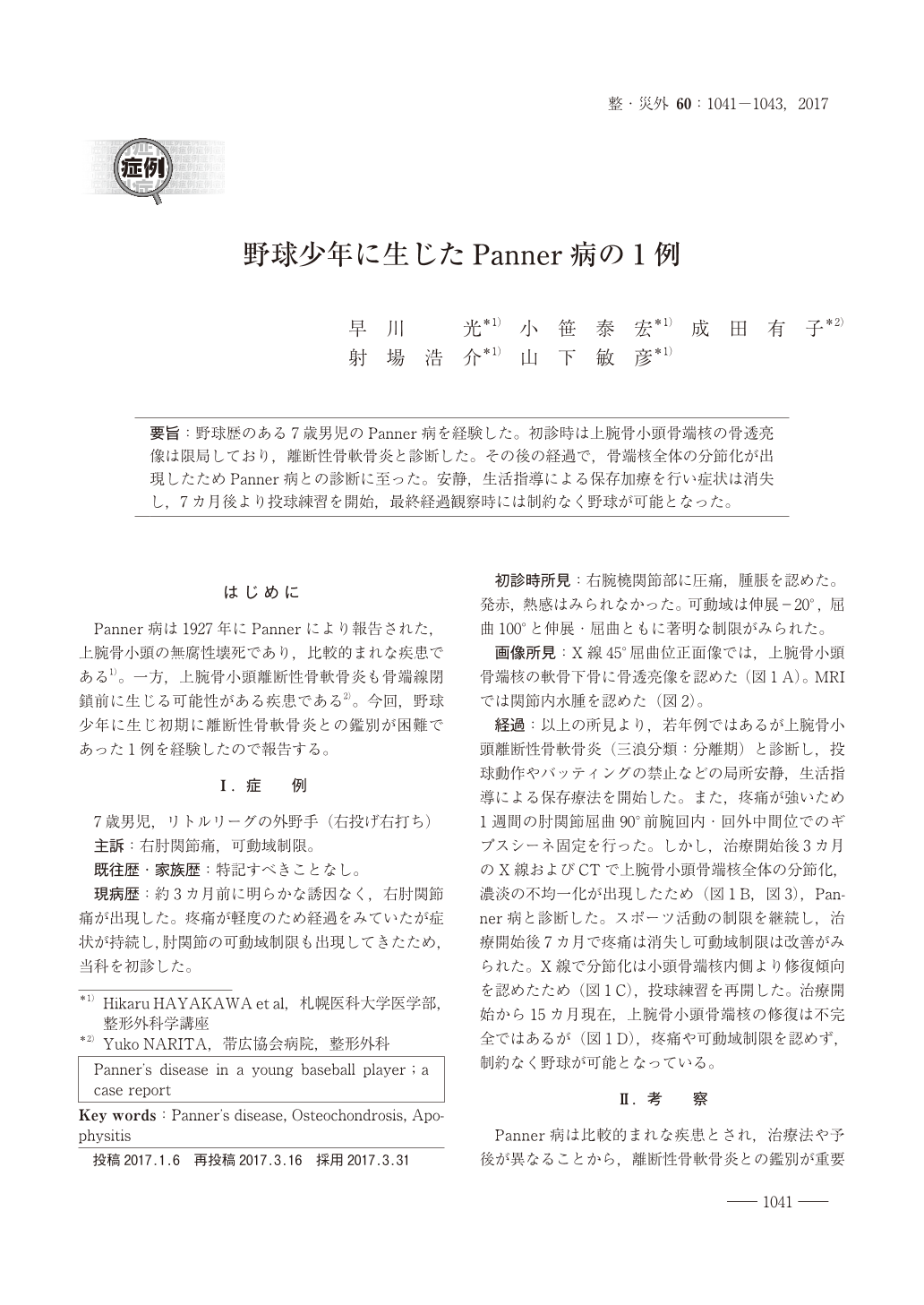1 0 0 0 野球少年に生じたPanner病の1例
1 0 0 0 OA 局所性骨粗鬆化に伴う四肢疼痛
- 著者
- 射場 浩介 道家 孝幸 花香 恵 金谷 久美子 阿部 恭久 山下 敏彦
- 出版者
- 日本疼痛学会
- 雑誌
- PAIN RESEARCH (ISSN:09158588)
- 巻号頁・発行日
- vol.31, no.4, pp.203-209, 2016-12-26 (Released:2017-01-27)
- 参考文献数
- 20
We have recently demonstrated that pathological changes leading to increased bone resorption by osteoclast activation are related to the induction of pain–like behavior in ovariectomized (OVX)mice. In addition,we have shown that the skeletal pain accompanying osteoporosis is possibly associated with the acidic microenvironment caused by osteoclast activation under a high bone turnover state. We, therefore, hypothesize that another osteoporosis model mouse might reveal the induction of pain–like behaviors in relation with osteoporotic changes. In this study, we demonstrated that regional osteoporosis of hind limbs induced pain–like behaviors using tailsuspended mice as another osteoporosis model.The hind limbs of tail–suspended mice were unloaded for 2 weeks, during which time the mice revealed significant regional osteoporotic changes in their hind limbs accompanied by osteoclast activation. In addition, these changes were significantly recovered by the resumption of weight bearing on the hind limbs for 4 weeks. Consistent with the pathological changes in the hind limbs, pain–like behaviors in the mice were induced by tail suspension and recovered by the resumption of weight bearing. Moreover, treatment with bisphosphonate significantly prevented the triggering of the regional osteoporosis and pain–like behaviors, and antagonists of the acid–sensing nociceptors, such as transient receptor potential channel vanilloid subfamily member 1 and acid–sensing ion channels, significantly improved the painlike behaviors in the tail–suspended mice.We, therefore, believe that pathologic changes of osteoporosis due to osteo clast activation might be a trigger for the pain–like behaviors in osteoporosis patients.
